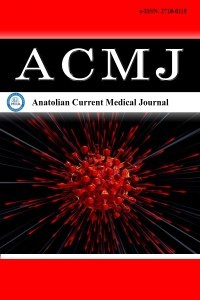1. Alverdy J, Chi HS, Sheldon GF . The effect of parenteral nutrition on gastrointestinal immunity. The importance of enteral stimulation. Ann Surg 1985; 202: 681–4.
2. Deitch EA, Ma WJ, Ma L, Berg RD, Specian RD. Protein malnutrition predisposes to inflammatory-induced gut-origin septic states. Ann Surg 1990; 211: 560–7.
3. Hossein SM, Leili M, Hossein AM. Acceptability and outcomes of percutaneous endoscopic gastrostomy (PEG) tube placement and patient quality of life. Turk J Gastroenterol 2011; 22: 128–33.
4. Gauderer MW, Ponsky JL, Izant RJ. Gastrostomy without laparotomy: a percutaneous endoscopic technique. J Pediatr Surg 1980; 15: 872–5.
5. Conroy T. The Prevention and Management of complications associated with established percutaneous gastrostomy tubes in adults: a systematic review. JBI Database System Rev Implement Rep [Internet] 2009; 7: 1–37.
6. Arvanitakis M, Gkolfakis P, Despott EJ, et al. Endoscopic management of enteral tubes in adult patients - Part 1: Definitions and indications. European Society of Gastrointestinal Endoscopy (ESGE) Guideline. Endoscopy 2021; 53: 81–92.
7. Temiz A, Aslan OB, Albayrak Y, Albayrak F, Kısaoğlu A, Er S. Percutaneous endoscopic gastrostomy: indications and complications. Akademik Gastroenterol Derg 2015; 14: 113–6.
8. Kimyagarov S, Turgeman D, Fleissig Y, Klid R, Kopel B, Adunsky A. Percutaneous endoscopic gastrostomy (PEG) tube feeding of nursing home residents is not associated with improved body composition parameters. J Nutr Health Aging 2013; 17: 162–5.
9. Hutchinson E, Wilson N. Acute stroke, dysphagia and nutritional support. Br J Community Nurs 2013; S26-9.
10. Kartal M, Kalaycı T , Y eni M. Üçüncü basamak bir sağlık merkezinin perkütan endoskopik gastrostomi deneyimi. Cukurova Anestezi ve Cerrahi Bilimler Derg 2021; 5: 54-60
11. Sit M, Kahramansoy N, Tekelioglu UY , Ocak T. Our experience in percutaneous endoscopic gastrostomy. J Academic Res Med 2013; 3: 66–8.
12. DiSario JA. Endoscopic approaches to enteral nutritional support. Best Pract Res Clin Gastroenterol 2006; 20: 605–30.
13. Akay MA, Yayla D, Elemen L, et al. Percutaneous Endoscopic Gastrostomy; Experience of two clinics. Sakarya Med J 2014; 4: 70–43.
14. Peksöz R, Borazan S. Türkiyenin doğusunda II. basamak bir devlet hastanesinin perkütan endoskopik gastrostomi deneyimi. Endoskopi Gastrointestinal 2020; 1–4.
15. Erdil A, Tüzün A, Saka M, et al. Perkütan endoskopik gastrostomi uygulamalarımız ve sonuçları. Gülhane T ıp Derg 2001; 43: 379–83.
16. Coşkun O. Perkütan endoskopik gastrostomi uygulamasındaki sonuçlarımız: 58 olgunun değerlendirilmesi. Endoskopi Gastrointestinal. 2019; 27: 93-6.
17. Kahramanoğlu Aksoy E, Sapmaz F, Akpınar M, et al. Long-term Follow-up Results of Patients with Percutaneous Endoscopic Gastrostomy and Factors Affecting Survival. J Ankara University Faculty of Medicine 2019; 72: 179–83.
18. Duzenli T, Ketenci M, Akyol T, et al. Predictive factors of complications and 30-day mortality in patients undergoing percutaneous endoscopic gastrostomy: the utility of C-reactive protein to albumin ratio. Acta Gastroenterol Belg. 2021 ;84:283-88.
19. Lucendo AJ, Friginal-Ruiz AB. Percutaneous endoscopic gastrostomy: An update on its indications, management, complications, and care. Rev Esp Enferm Dig 2014; 106: 529–39.
20. Fagundes RB, Cantarelli JC, Fontana K, Motta GL. Percutaneous Endoscopic Gastrostomy and Peristomal Infection. Surg Laparosc Endosc Percutan Tech 2011; 21: 275–7.

